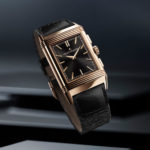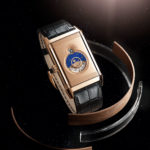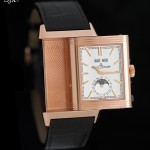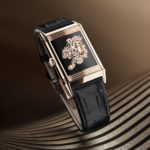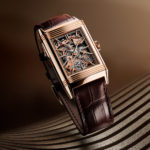Hands On: The Jaeger-LeCoultre Reverso Tribute Chronograph
Better but bigger.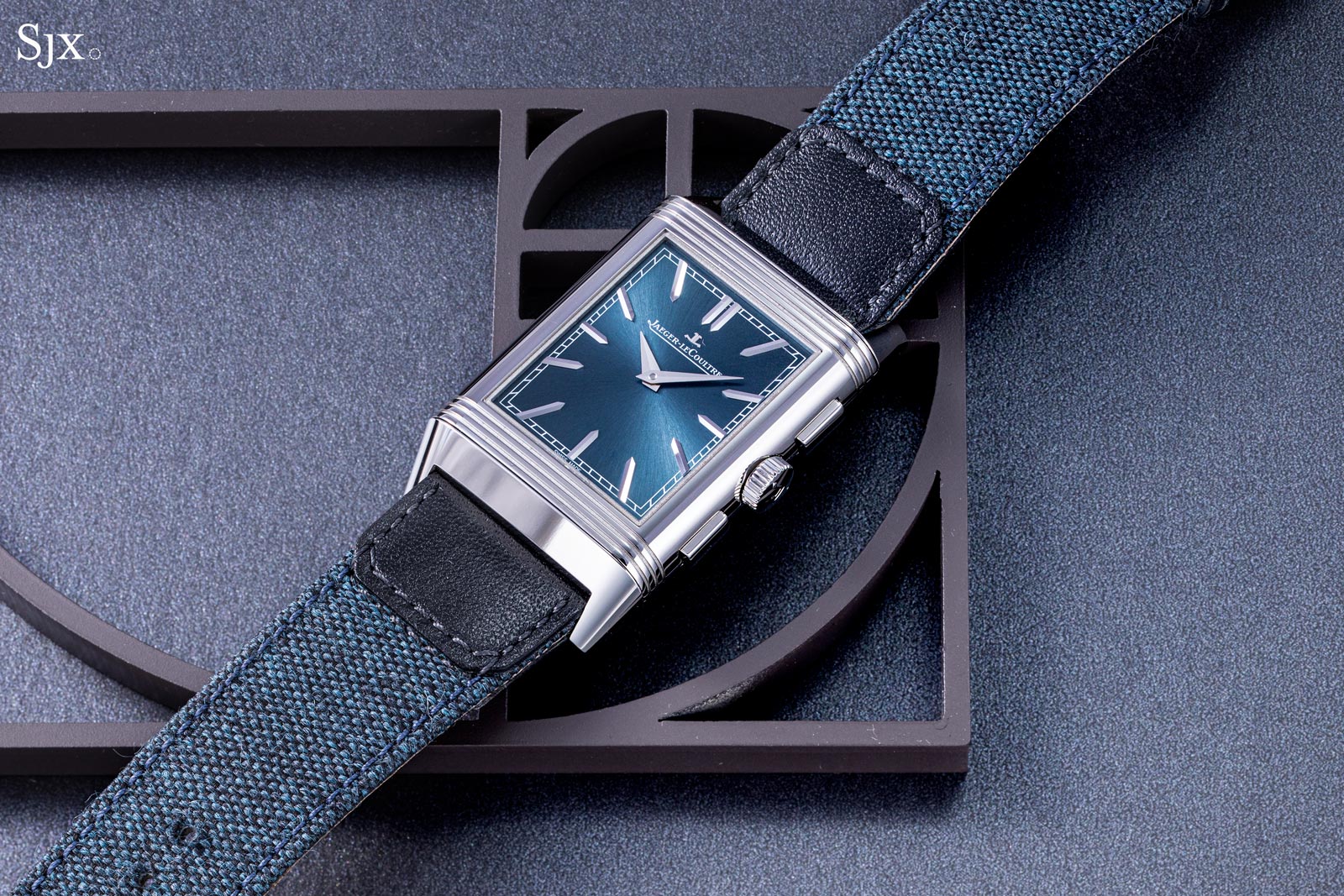
One of my favorite releases from Watches & Wonders (W&W) was the Jaeger-LeCoultre Reverso Tribute Chronograph. Complicated Reversos are almost always interesting given the space constraints and commercial implications in developing rectangular movements, and the Tribute Chronograph is no exception.
The new chronograph is a remake of sorts that honours one of the brand’s signature watches from the 1990s. While the original Reverso Chronographe Retrograde was a 500-piece limited edition in pink gold from 1996, the Tribute Chronograph is a regular production watch available in both pink gold or steel. Both versions feature a sun-ray brushed primary dial and partially open-worked chronograph dial on the reverse.
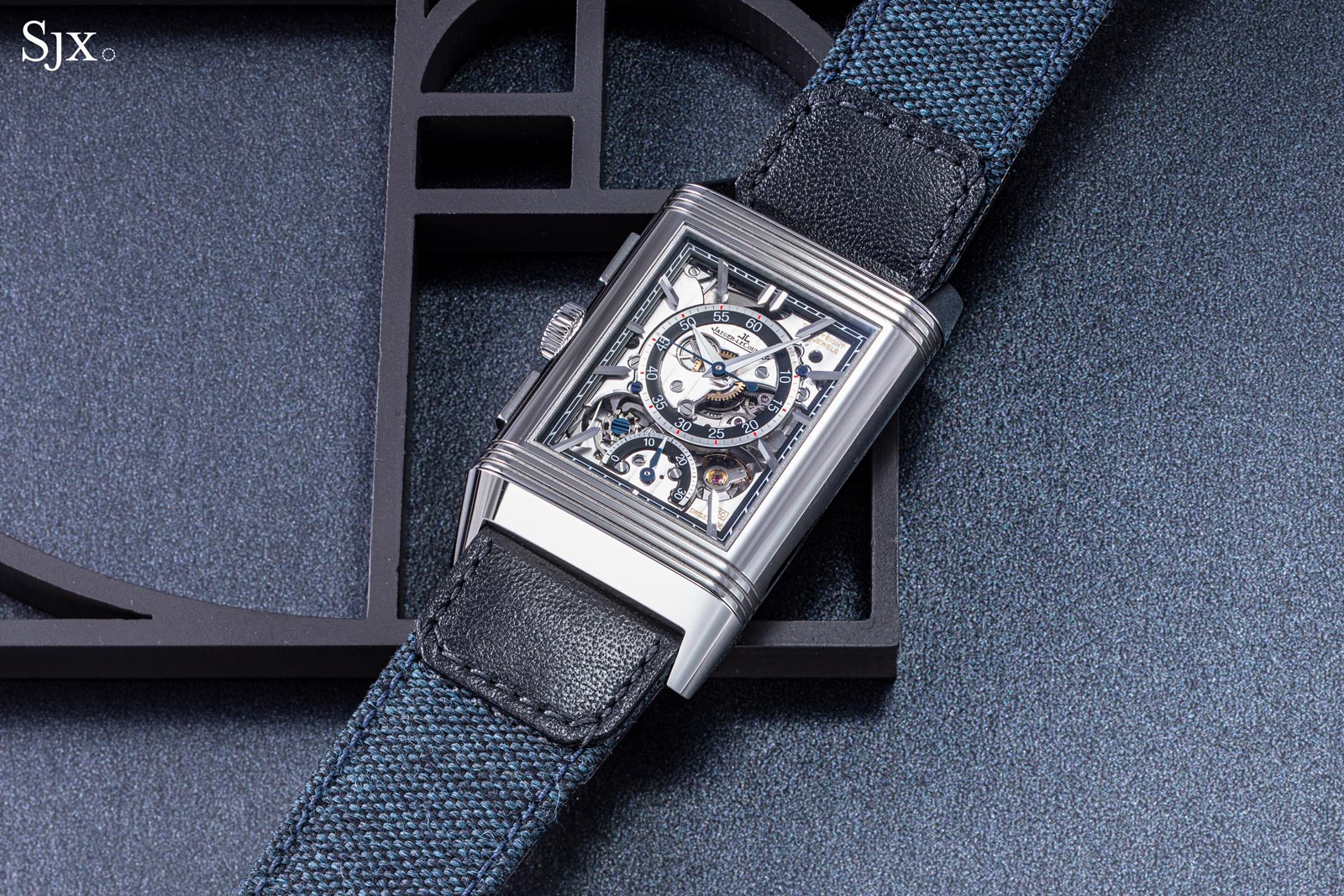
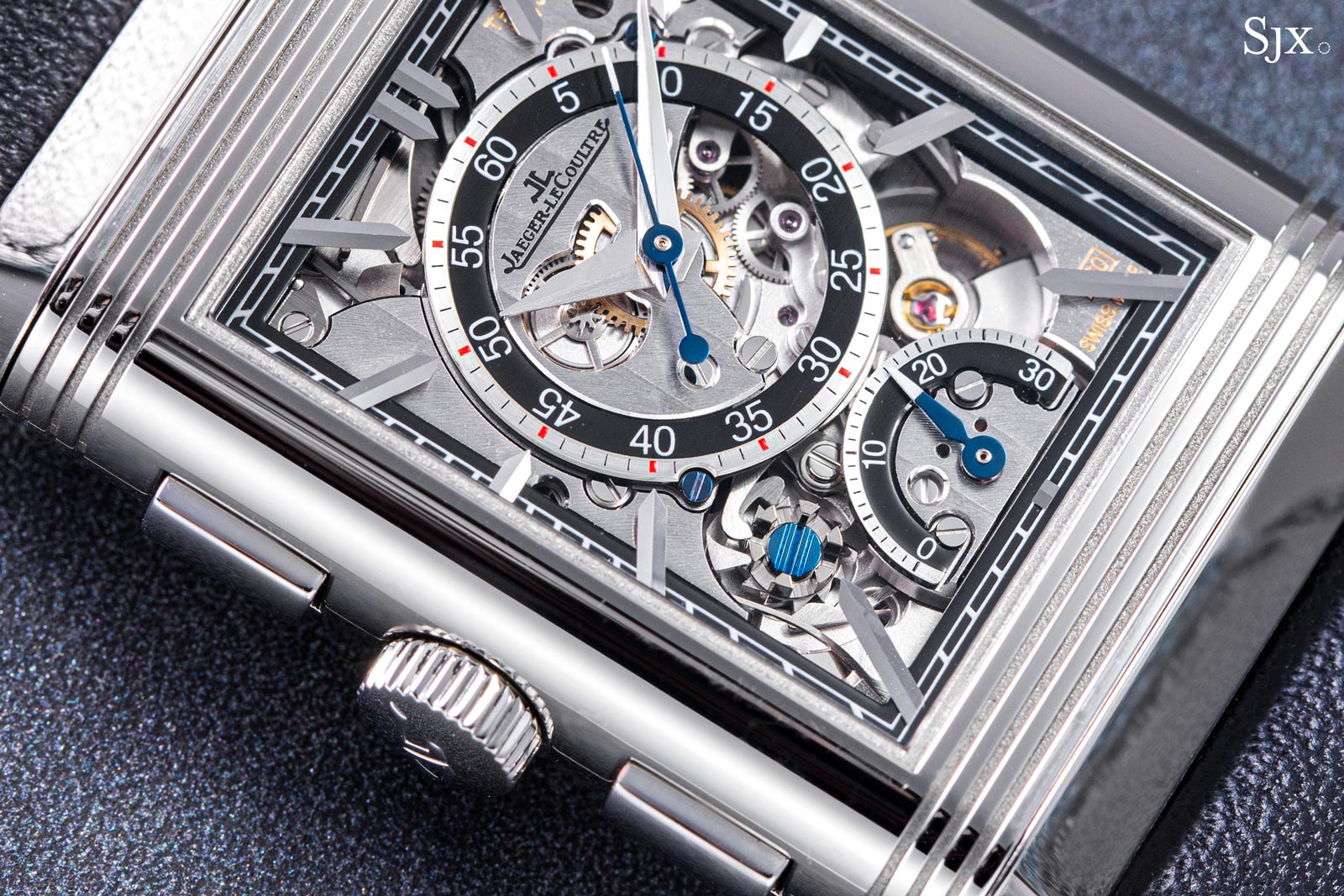
Initial thoughts
As a fan of the original Reverso chronograph, I am excited to see this concept brought back to life. The key elements that made the original unique, namely the distinct styles of the two faces and the compact, rectangular chronograph movement, have been retained and updated. Both the steel and pink gold references are attractive, but the pink gold version is arguably the most appealing with its gold-on-black livery that brings to mind vintage “gilt” dials.
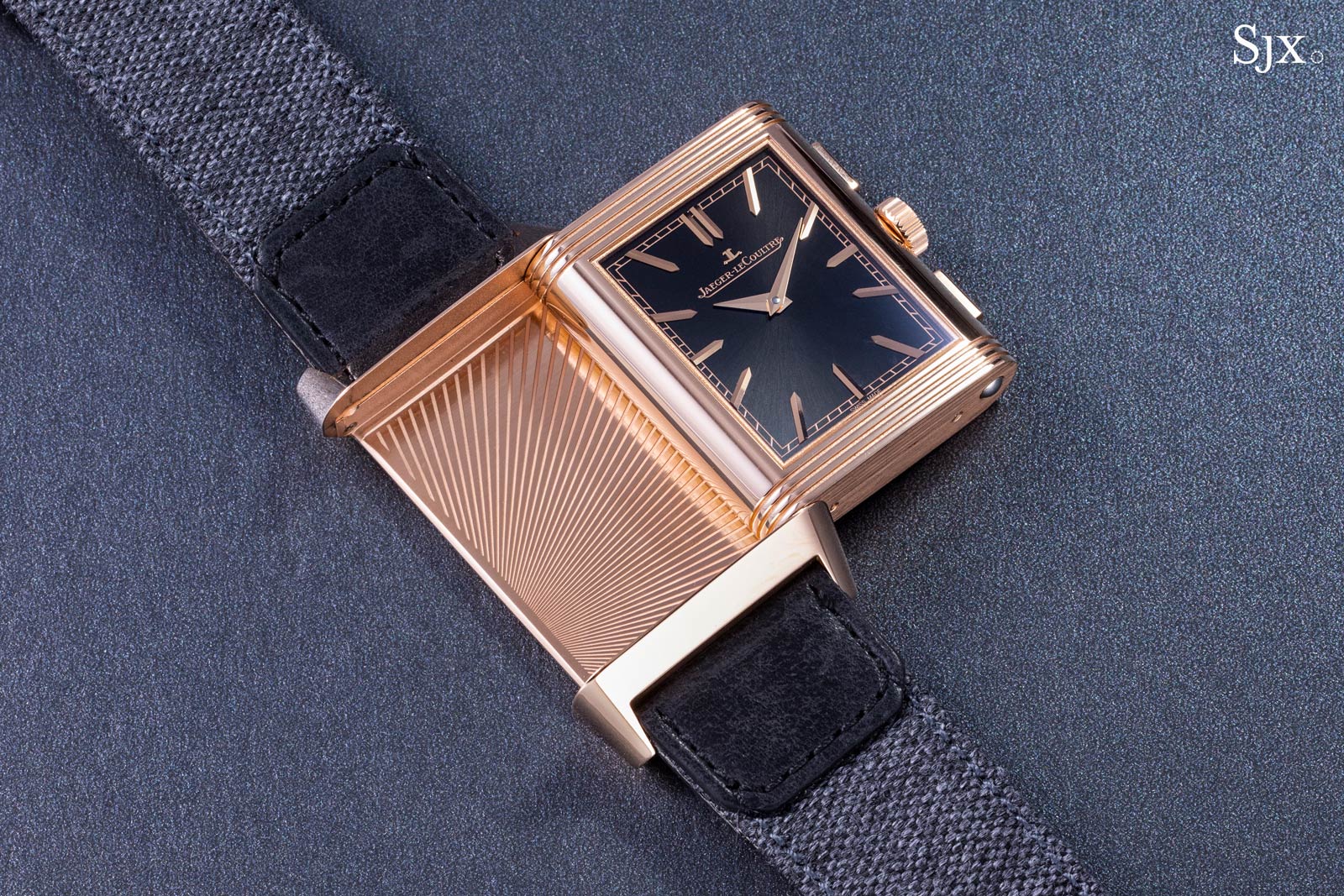
That said, there are a few trade-offs that give me pause. The large case of the Tribute Chronograph is potentially problematic for some wrists, and the simplified dial feels generic (whereas the original had a guilloche dial).
I am also conflicted about the movement. On one hand, it’s great to see a clever construction given new life. On the other hand, Jaeger-LeCoultre (JLC) is a brand that built its reputation on technical ingenuity – it was historically a movement maker rather than watch brand – so the reliance on a 27 year-old movement, updated and enhanced though it may be, is somewhat disappointing.
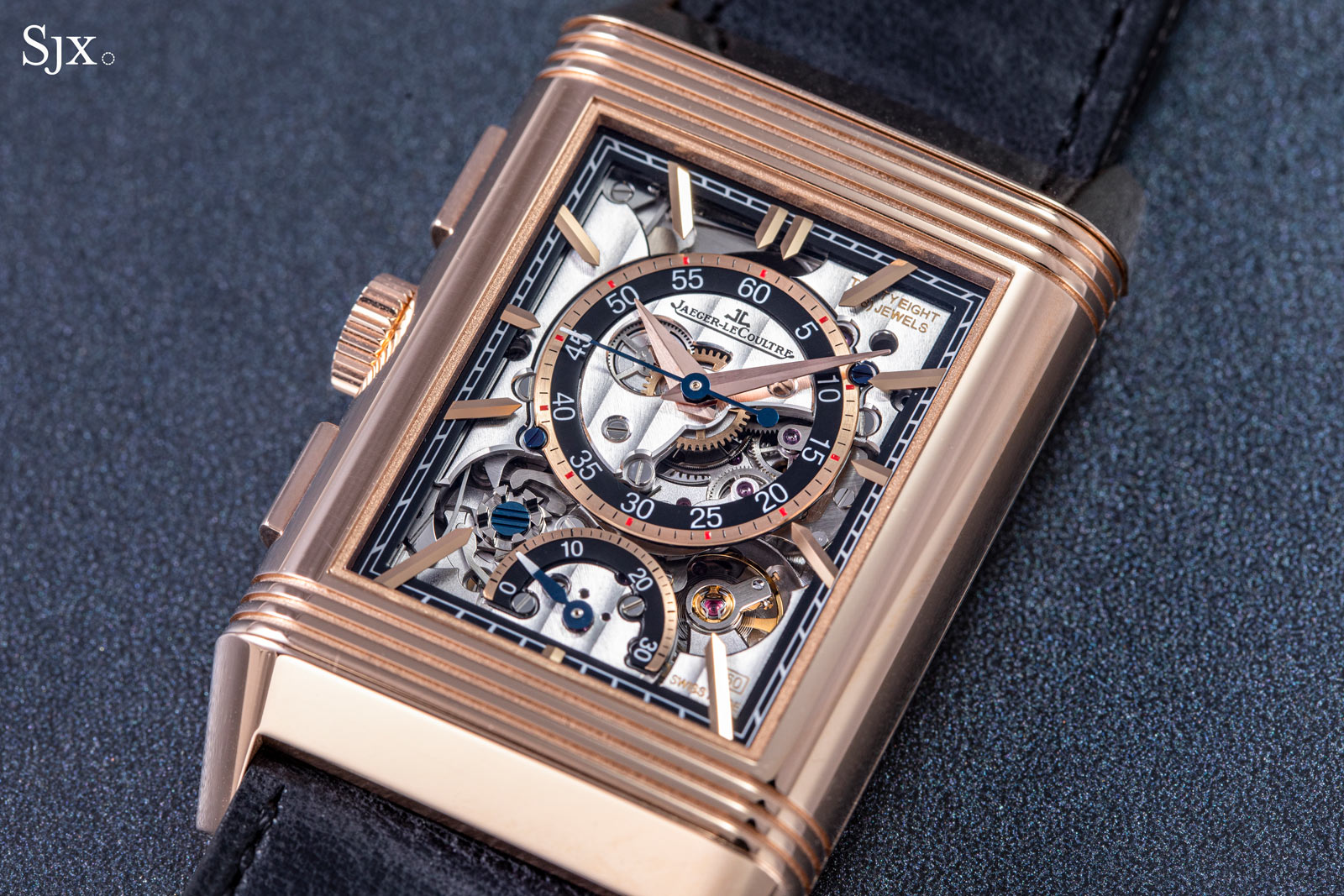
On balance, however, the Tribute Chronograph offers a compelling value proposition, especially in steel. JLC has been fairly aggressive with recent price increases across the Reverso collection and the Tribute Chronograph sits near the top of the price pyramid at US$21,400 in steel and US$37,400 in pink gold. While the recent price increases risk jeopardising the brand’s reputation for value, the Tribute Chronograph is still a lot of watch for the money compared to other premium chronographs on the market.
In fact, there’s nothing else quite like it. Few watches offer two distinct personalities in a single watch, and those that do tend to be far more expensive. The closest competitor is probably JLC’s own Reverso Classic Large Duoface, but the Duoface lacks the technical intrigue of the chronograph, and the contrast between its twin faces is less defined both functionally and aesthetically.
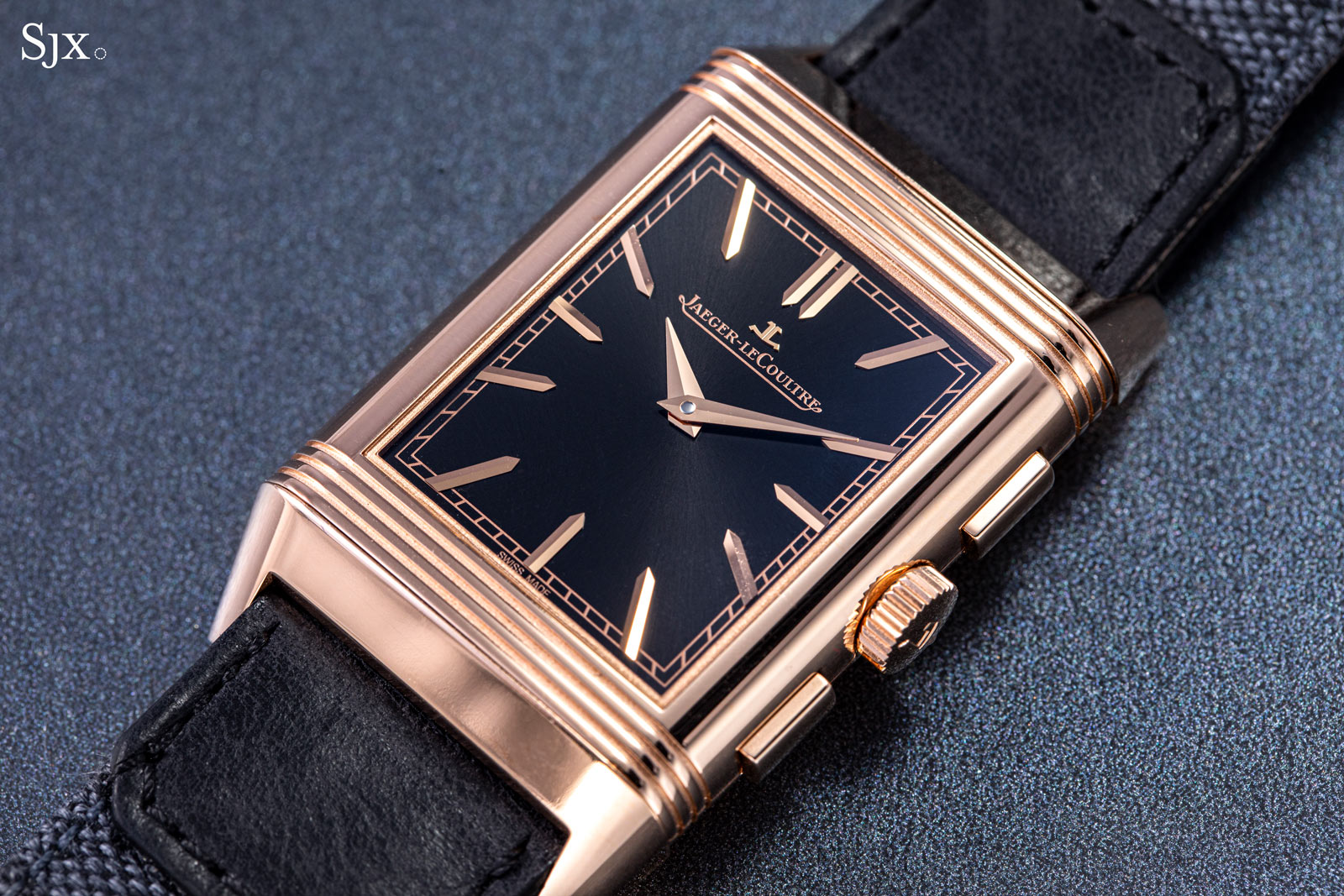
Twenty-seven years in the making
The story of the Tribute Chronograph starts with the Reverso Chronograph Retrograde of 1996, one of a series of six limited edition Reverso models introduced between 1991 and 2000 to mark the 60th anniversary of the model. All featured complicated movements inside a pink gold case and a guilloche dial with Arabic numerals, a look that was very much the quintessential Reverso aesthetic at the time.
Square and rectangular watches tend to be less popular than round watches, which makes them a bigger statement when a brand develops a form movement from the ground up for such form cases. These form movements, with complications no less, formed a key part of the appeal of the limited-edition Reverso series – each movement was specifically developed for the compact Reverso Grande Taille case. It was a powerful signal to the industry that JLC could and would make any movement it wanted.
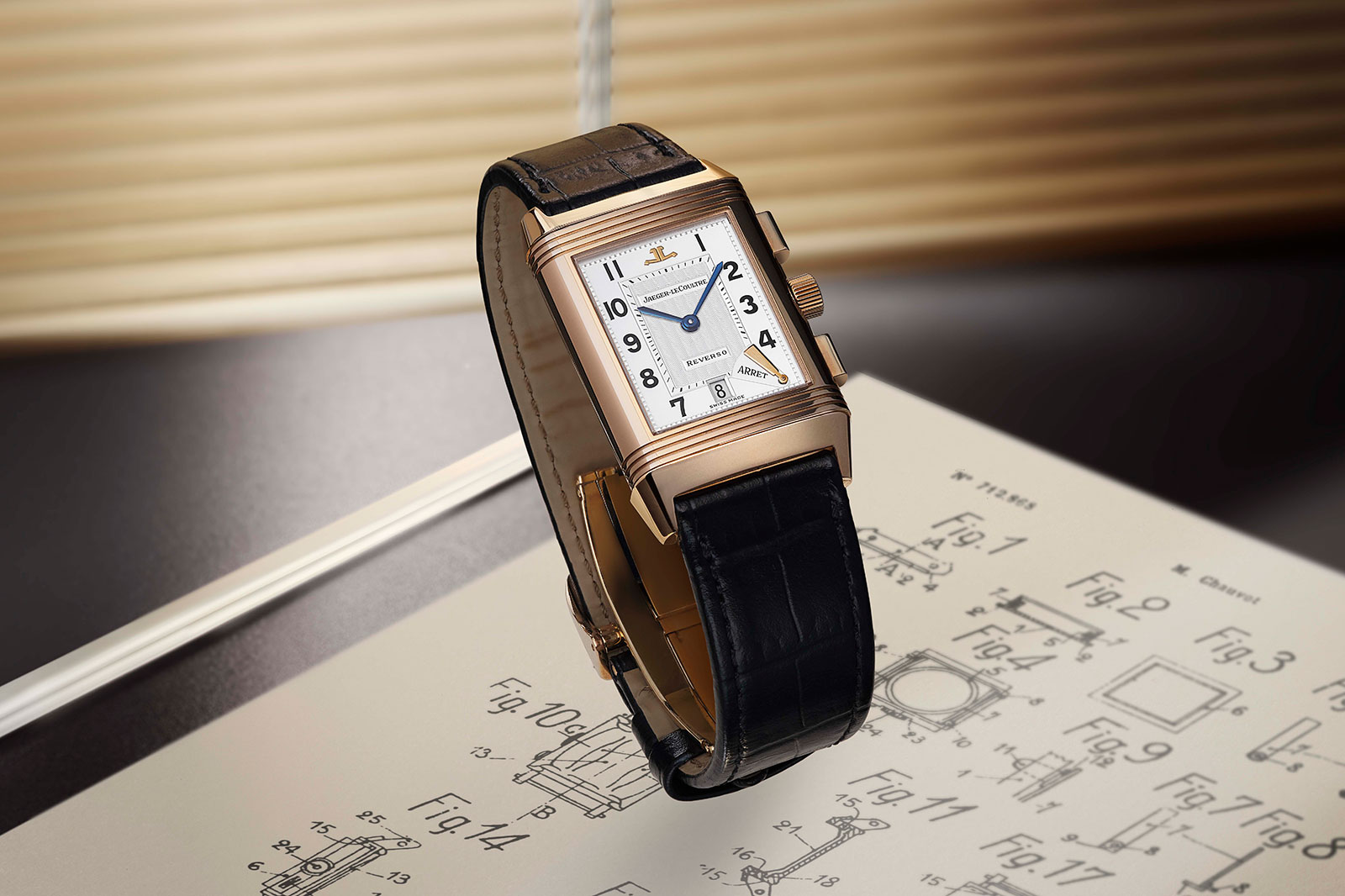
The Reverso Chronographe Retrograde of 1996 with a date at six and stop/run indicator at five o’clock. Image – JLC
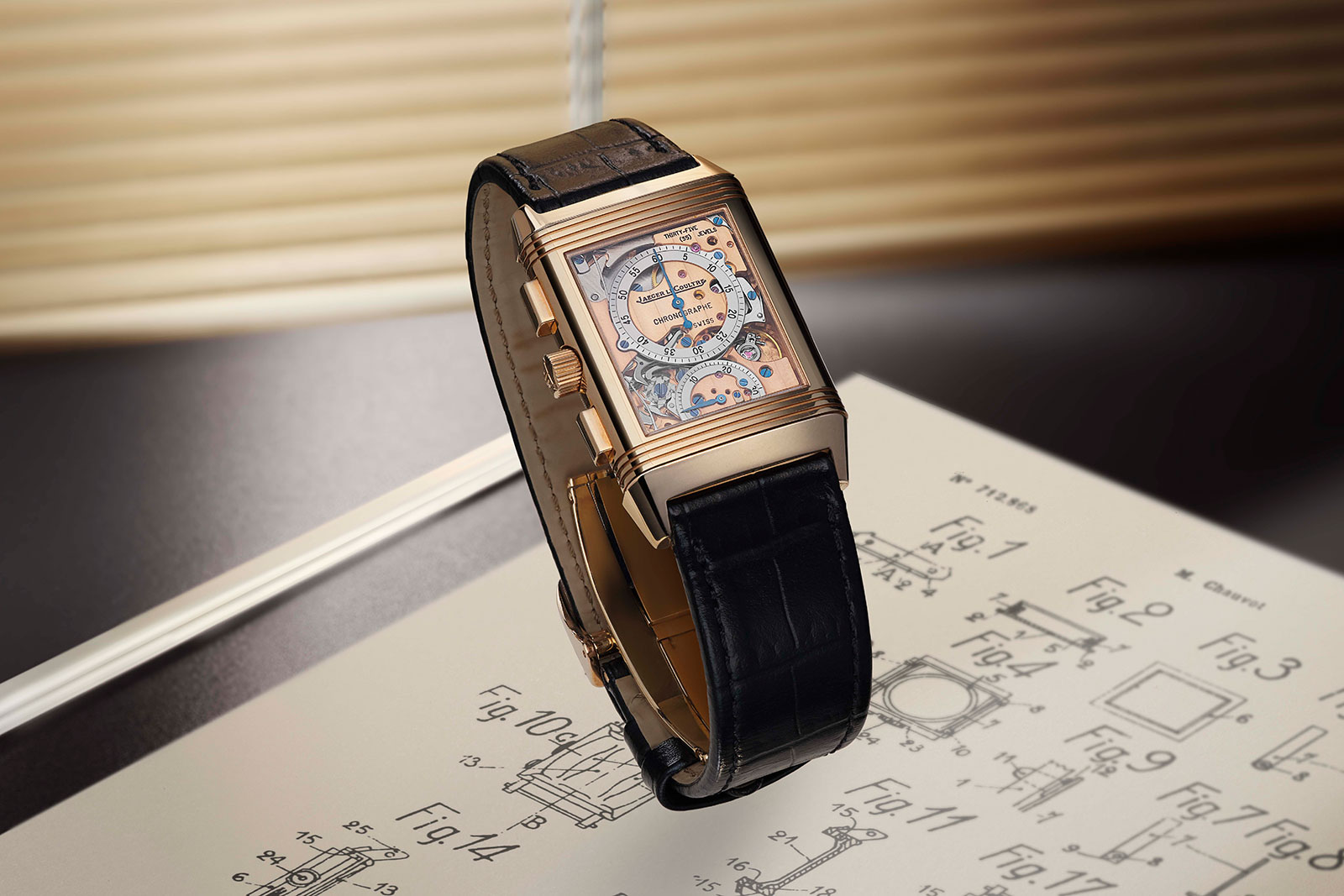
The chronograph face on the reverse. Image – JLC
At the time, JLC was overseen by Günter Blümlein (1943-2001), a visionary who saw the brand’s unique technical prowess thanks to its history as a movement maker as a key differentiator in the post-quartz environment. Collectively, the six complicated Reversos, along with later models like the Gyrotourbillon of 2005, helped elevate the brand’s position within the industry to where it is today.
While certainly a novel invention in the 1990s, the original Reverso chronograph might actually have been inspired by a prototype made by Movado in 1939. Last seen in public over three decades ago when the only example sold first at Sotheby’s and then at Antiquorum, the prototype was double-faced chronograph inside a Reverso case, which was then supplied by the case maker to a variety of brands (German watch journalist Gisbert Brunner has more details on the pair on his German-langauge site).
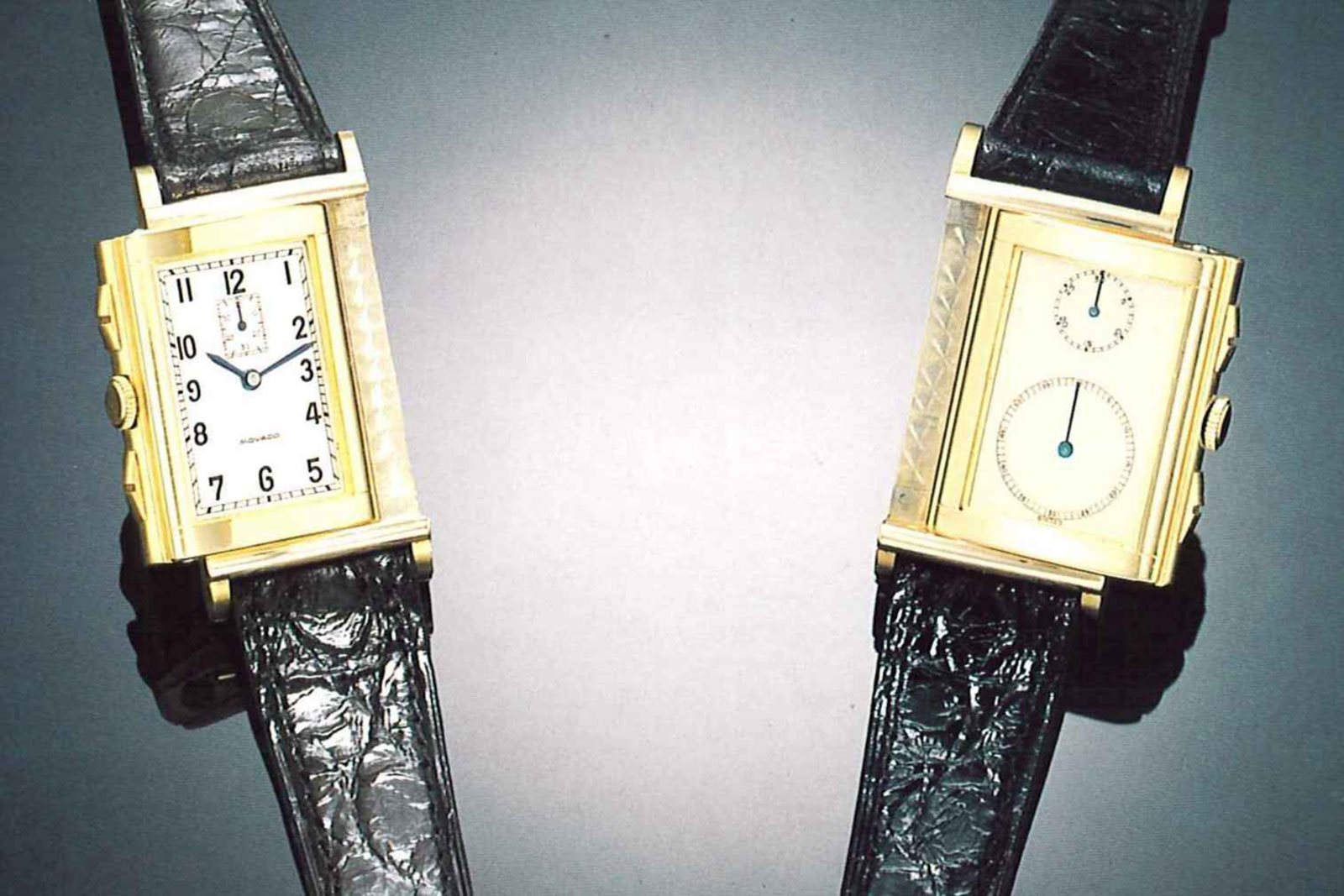
The Movado Reverso Chronograph. Image – Antiquorum
Strangely, the cal. 829 in the original Reverso chronograph is often cited as the first integrated chronograph movement designed in the post-quartz era – an erroneous assumption.
While it was undoubtedly a significant milestone, the slim and sophisticated Frédéric Piguet cal. 1180 predates the cal. 829 by a decade or so, having been introduced in the late 1980s. But even if it wasn’t quite the first, the cal. 829 was a significant movement that helped open peoples’ eyes to the aesthetic potential of technical watchmaking.
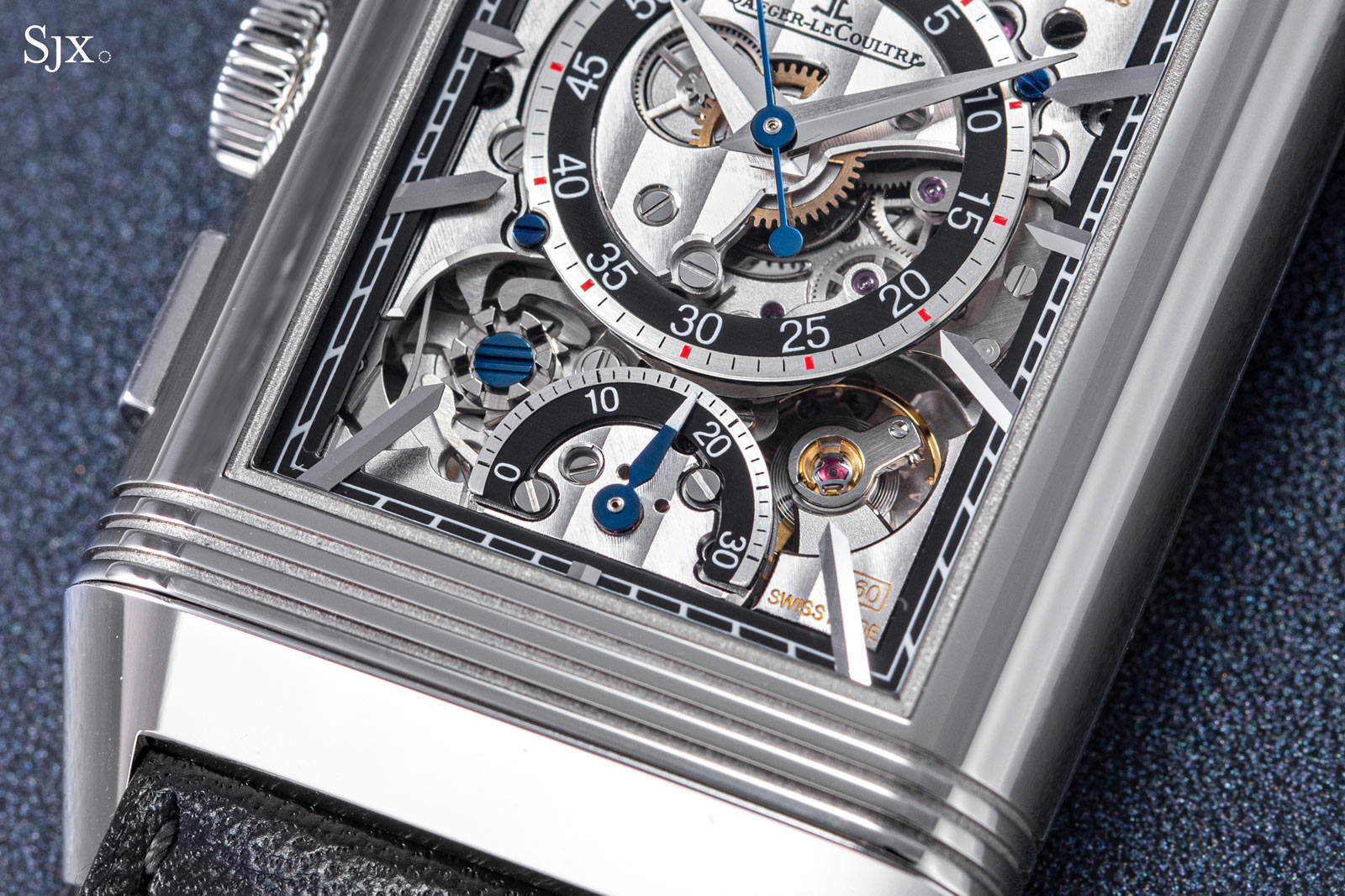
A fitting tribute
Given the new chronograph being part of the “Tribute” collection, comparing it to the original is only natural. Though functionally similar, the watches are aesthetically quite different, with the Tribute adopting today’s standard look for the Reverso, a clean style that is in keeping with the prevailing taste for minimalism.
Where the original model featured an Art Deco dial with stamped guilloche and blued sword-shaped hands, the Tribute opts for a radially-brushed dial and dauphine hands that are now almost the norm across the Reverso collection. The look is certainly more modern, though it loses some of the charm of the original model, which called to mind the vintage Reverso watches of the 1930s.
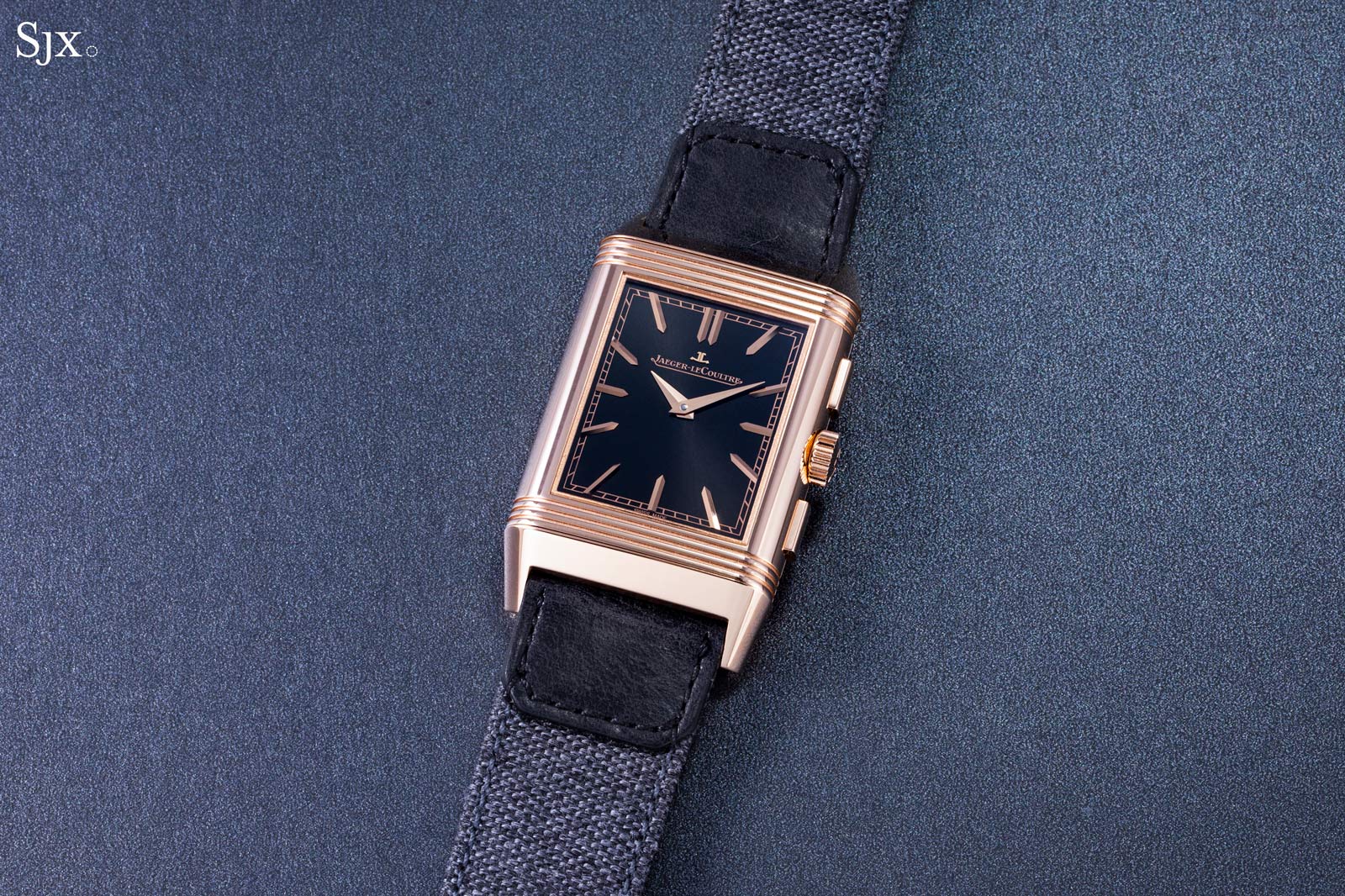
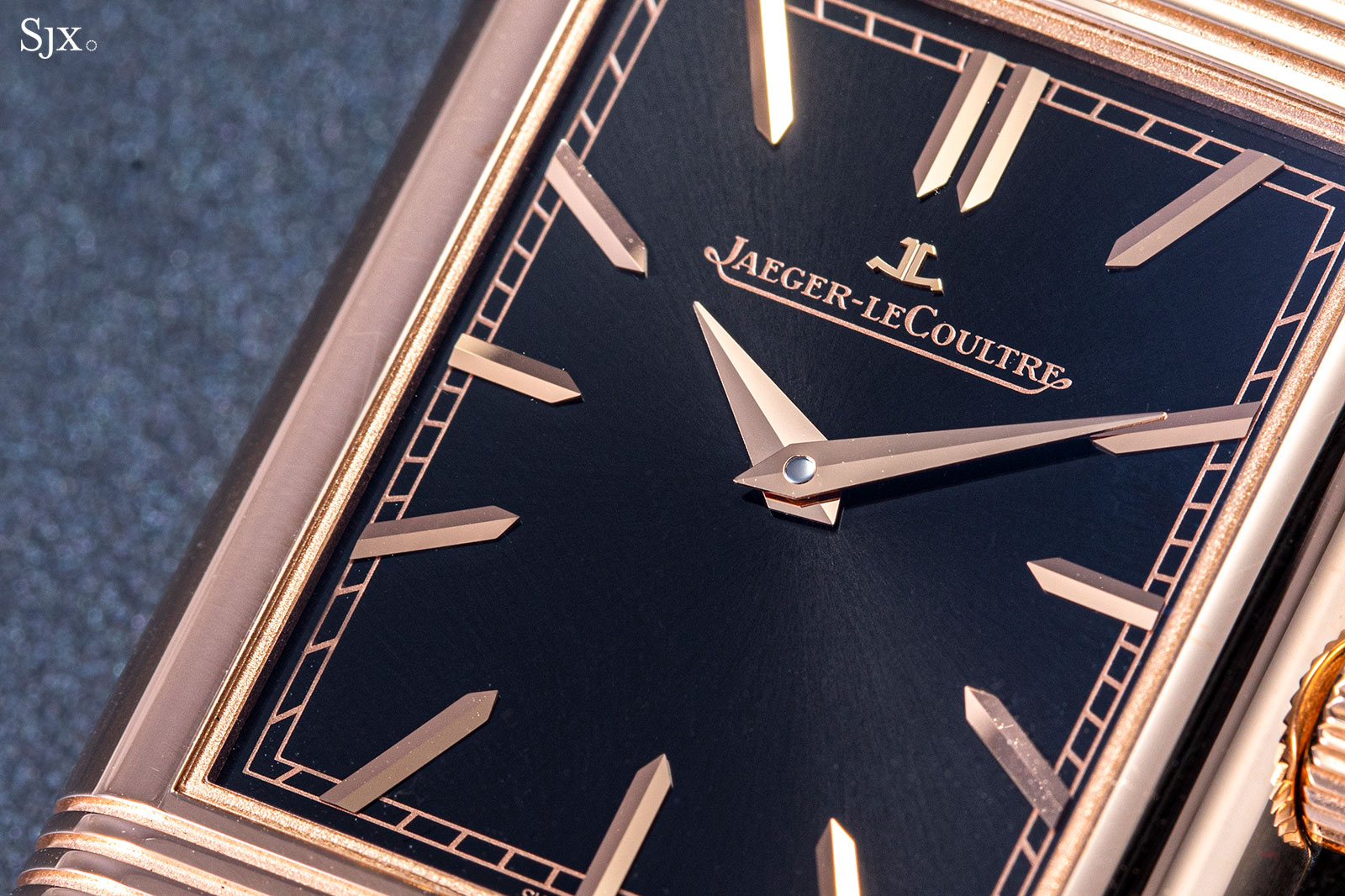
One of the most significant differences between the new chronograph and the 1996 original is size: the case has increased in volume by about 58%. Much of this increase is due to the case length, which has increased from 42 mm to 49.4 mm.
While still wearable, the larger size may be problematic for smaller wrists, especially given the elongated, flat form of the case. The lugs arch downwards to help with ergonomics, but it is still a long case.
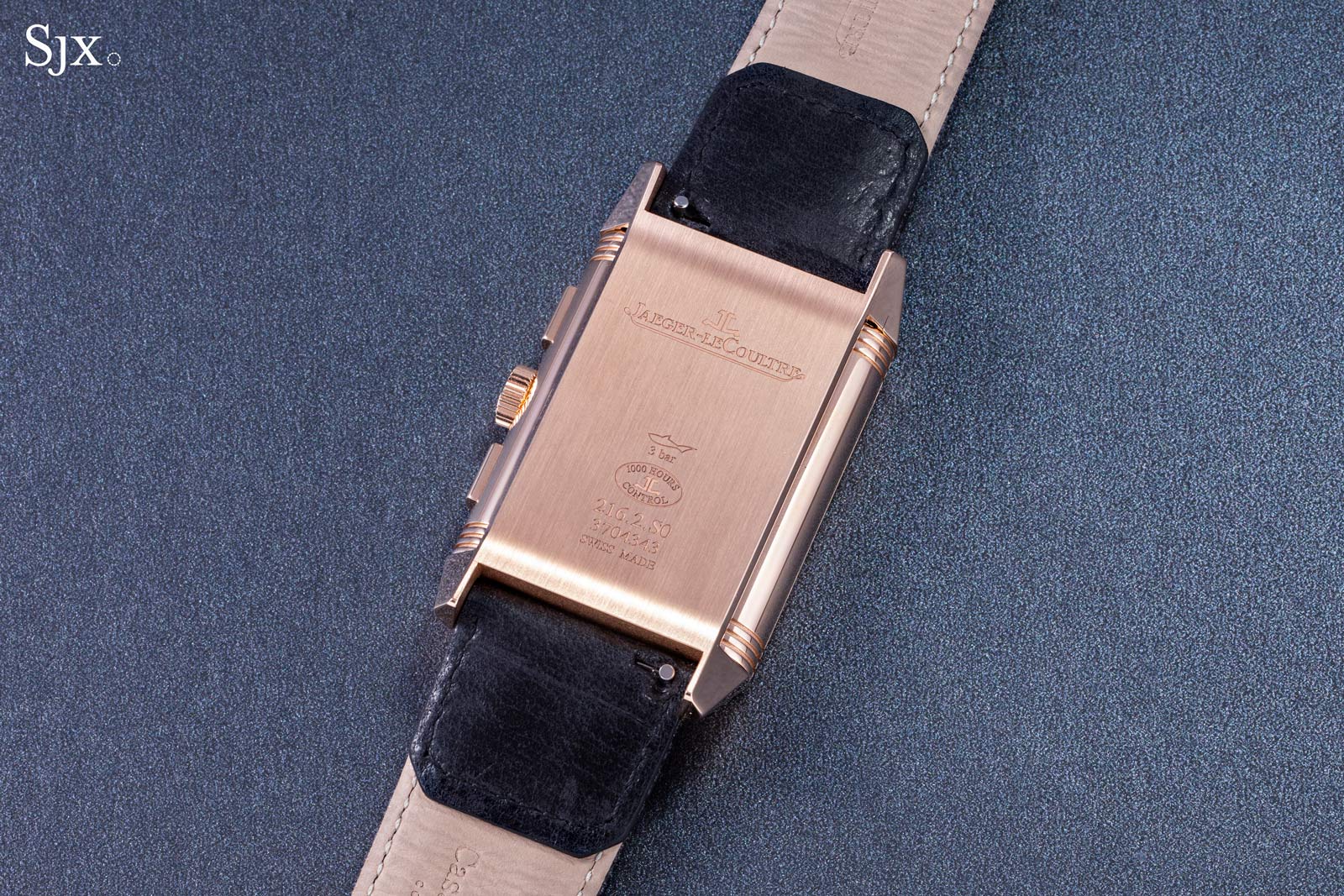
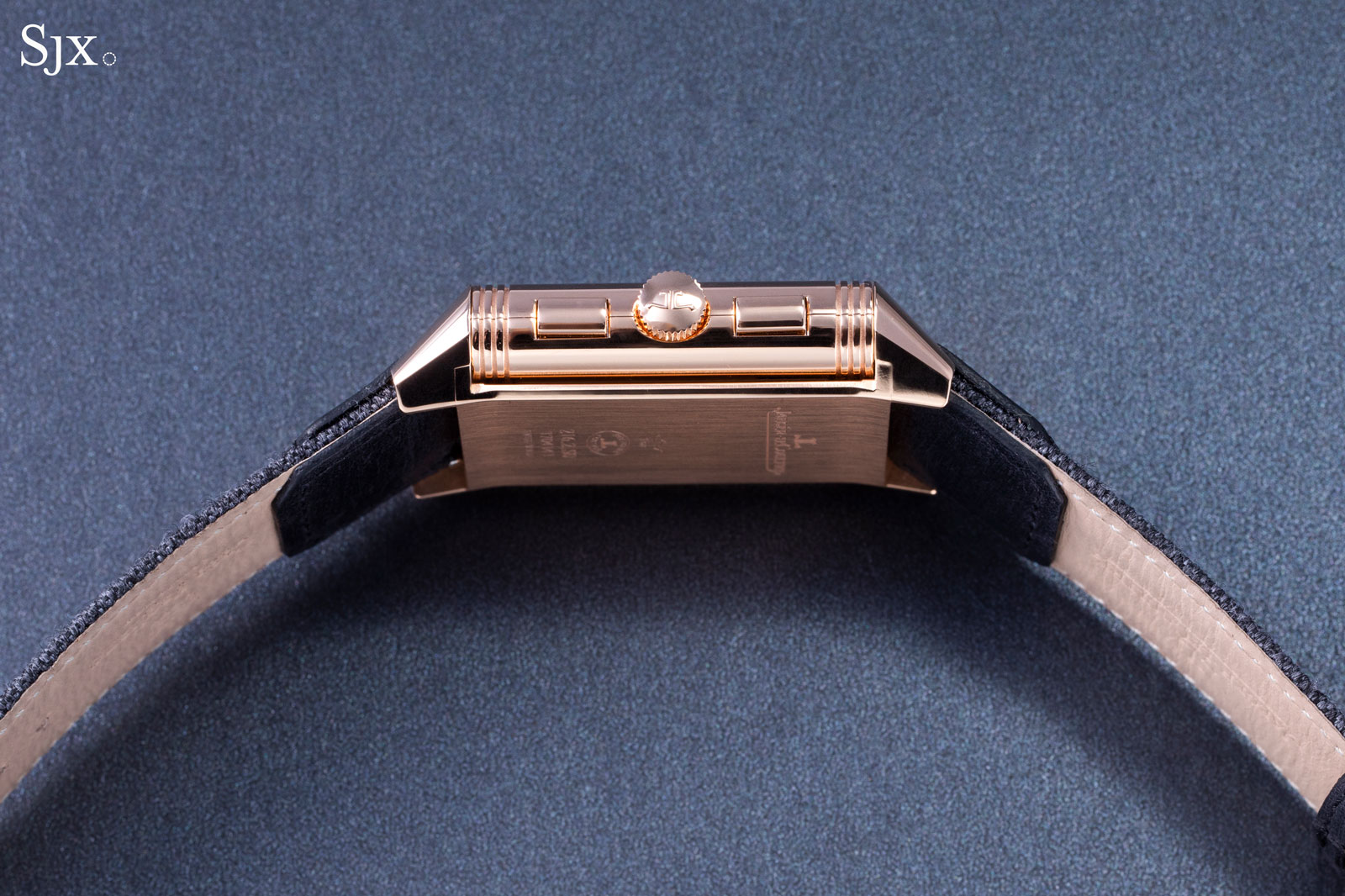
A few mechanical tweaks
But since this is Jaeger-LeCoultre, there is a technical reason for the enlargement: the synchronised secondary time display. The engineers who designed the cal. 829 of 1996 did such a good job making it compact that there was no space left over to link the motion works to the backside of the movement. Since the secondary time display on the back requires an additional gear train that runs around the components for the chronograph and main time display, a wider base plate and consequently larger movement were needed.
With a little more breathing room, JLC took the opportunity to increase the power reserve to 52 hours, an increase of 30% over the original model. That said, it is unknown if the rise in running time is the result of a larger barrel, or merely a new mainspring with more coils and superior alloy inside a barrel of the same size.
More subtle improvements to the movement include the relocation of the eccentric adjustment screws for regulation to the edge of the movement for convenience of the watchmaker.
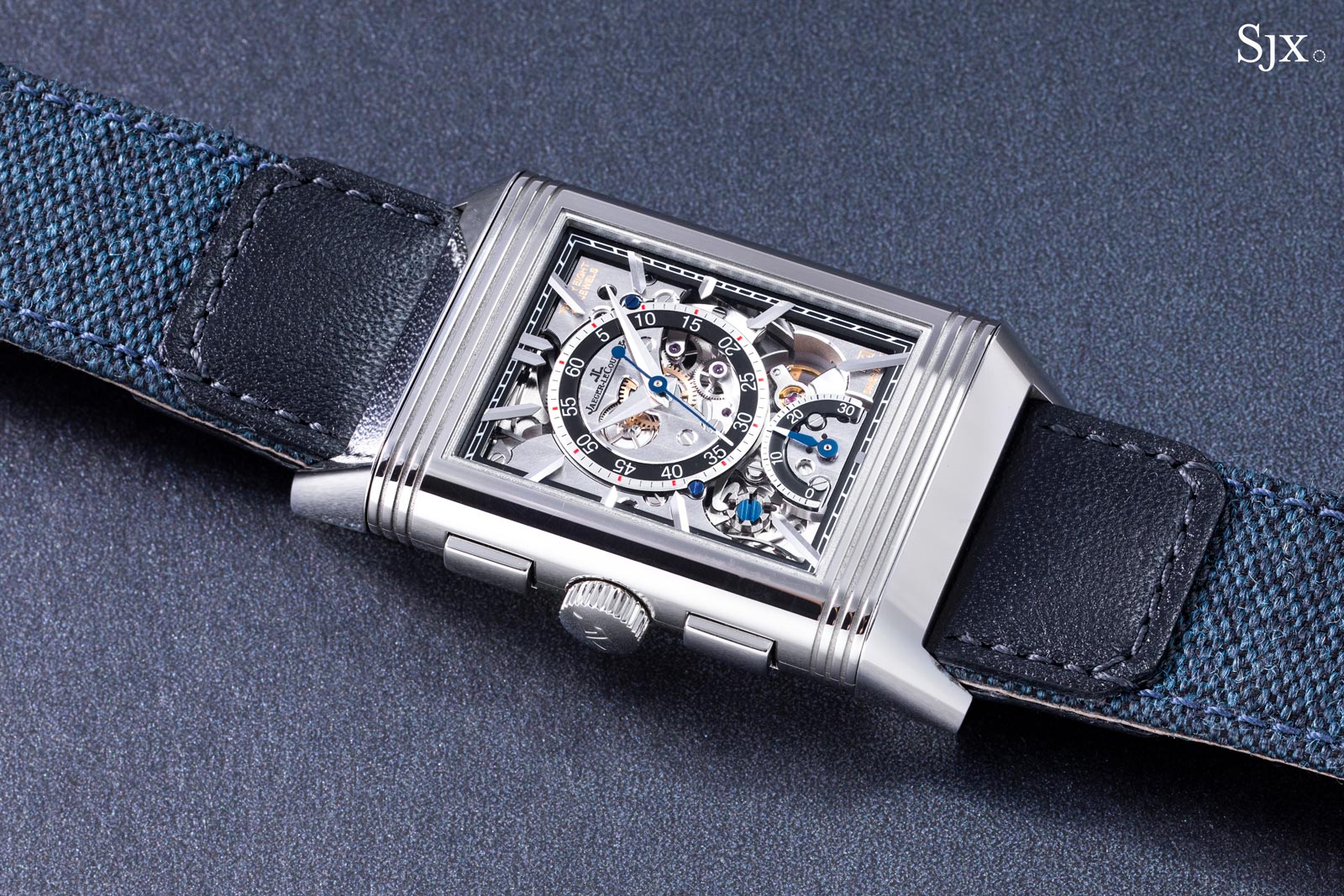
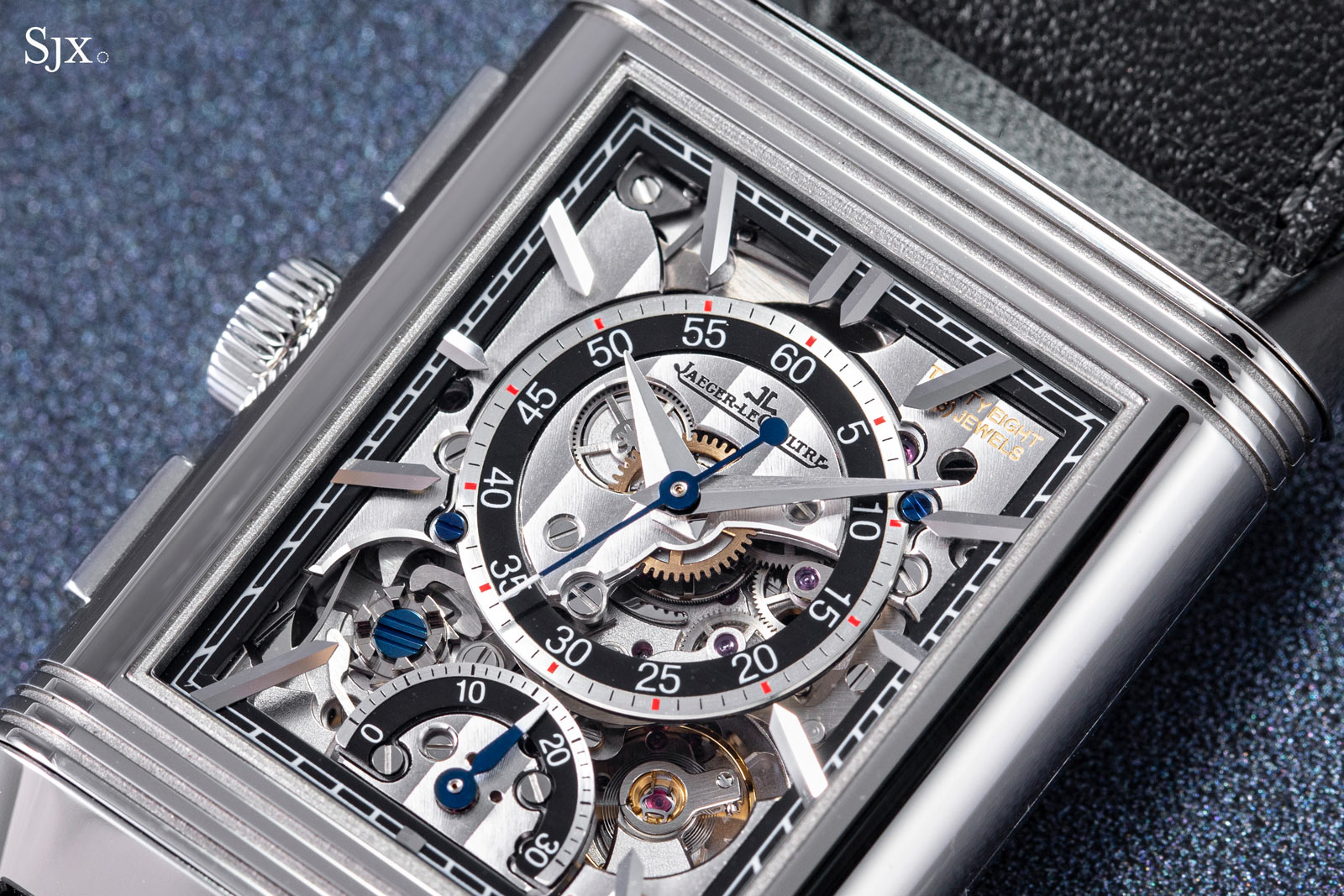
The second time display means the chronograph face can also double up as a primary time display, making this very nearly two watches in one. It would have been even better with an independently-adjustable second time display, allowing the watch to indicate a second time zone, but the secondary synchronised time display is still a welcome addition.
Unfortunately, the new chronograph dispenses with the stop/run indicator on the primary dial found on the original, meaning the wearer needs to flip the watch over to see if the chronograph is running. While this results in the more minimalist dial that defines the current Reverso aesthetic, this indicator provided useful information that will be missed.
That’s mainly due to the construction of the movement, which relies on a lateral coupling to drive the chronograph. Since such lateral coupling chronographs should not be left running nonstop (which would increase the energy drain on the mainspring and eventually affect timekeeping), the stop/run indicator served to notify the user of unintentional activation of the chronograph. In my view, the fan-shaped stop/run indicator also added a pleasing degree of asymmetry and technical intrigue to the main dial of the original.
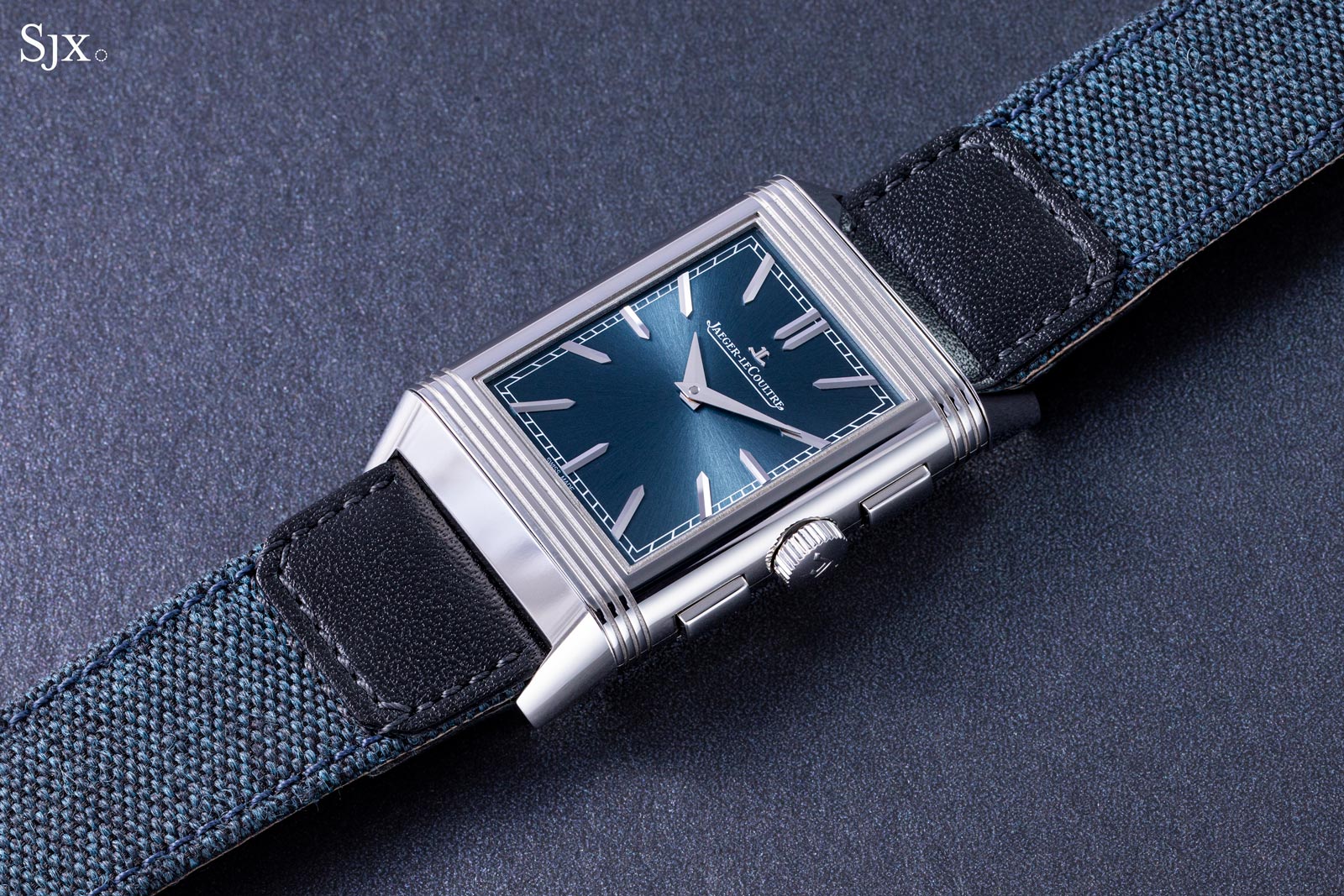
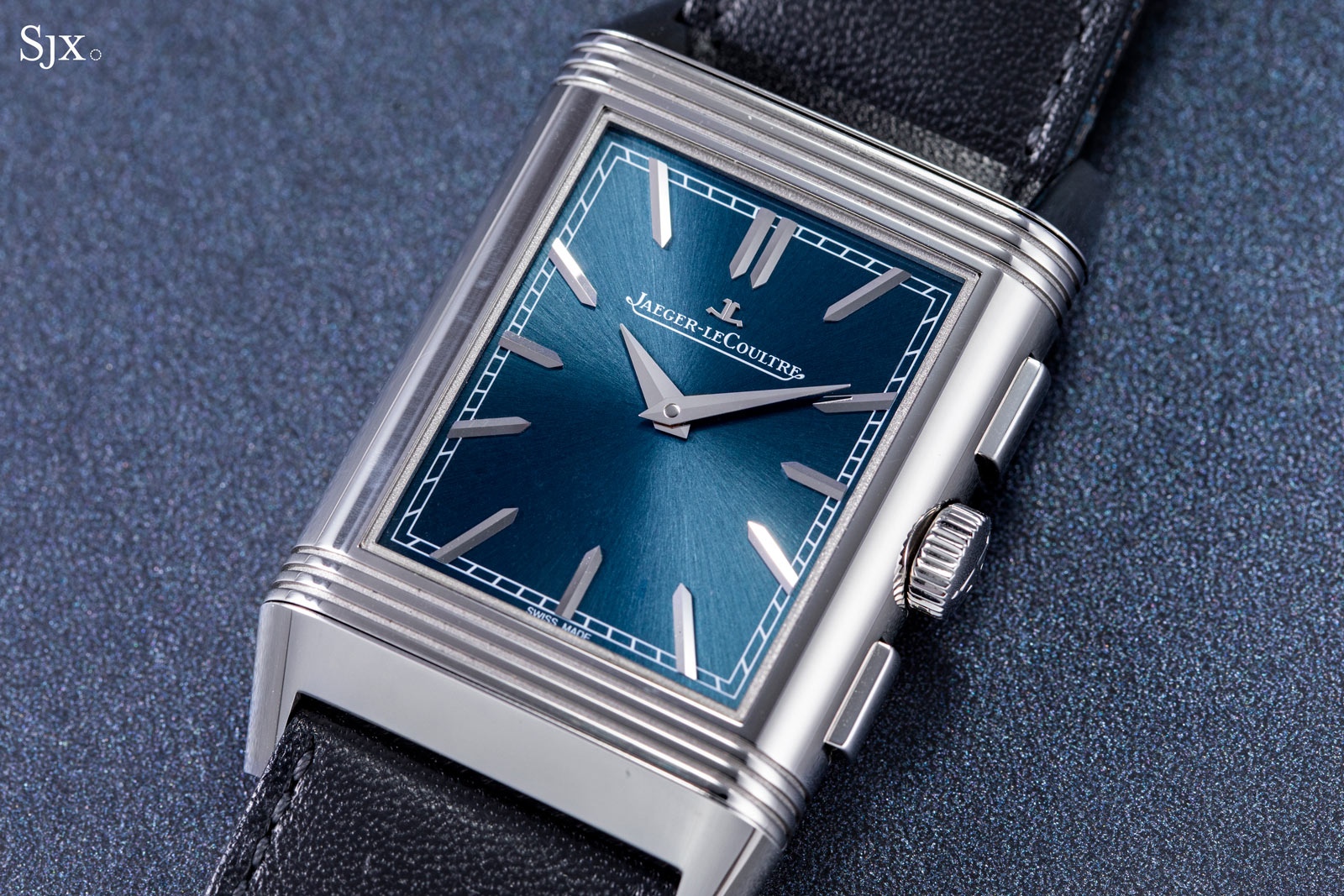
On the bright side, the cal. 860 in the new chronograph eliminates the six o’clock date found in the cal. 829 of the original. While the date window on the original was well integrated, it was always a secondary consideration in terms of design; the unusual chronograph was the raison d’être of the watch. The lack of a date window makes sense aesthetically, and further accentuates the difference between the primary and secondary dials – minimalist on one side, maximalist on the other.
Though finished to a similar standard of high-end industrial decoration, the finishing on the cal. 860 looks to be slightly more even and consistent than that of the cal. 829. JLC has always employed tidy machine finishing for its products, resulting in finishing that is a cut above equivalent movements from ETA and comparable to those of Frédéric Piguet, the movement maker located nearby that has since been integrated into Blancpain. Though this approach to finishing has remained consistent over the years, the brand has improves its methods and the cal. 860 is a testament to this progress.
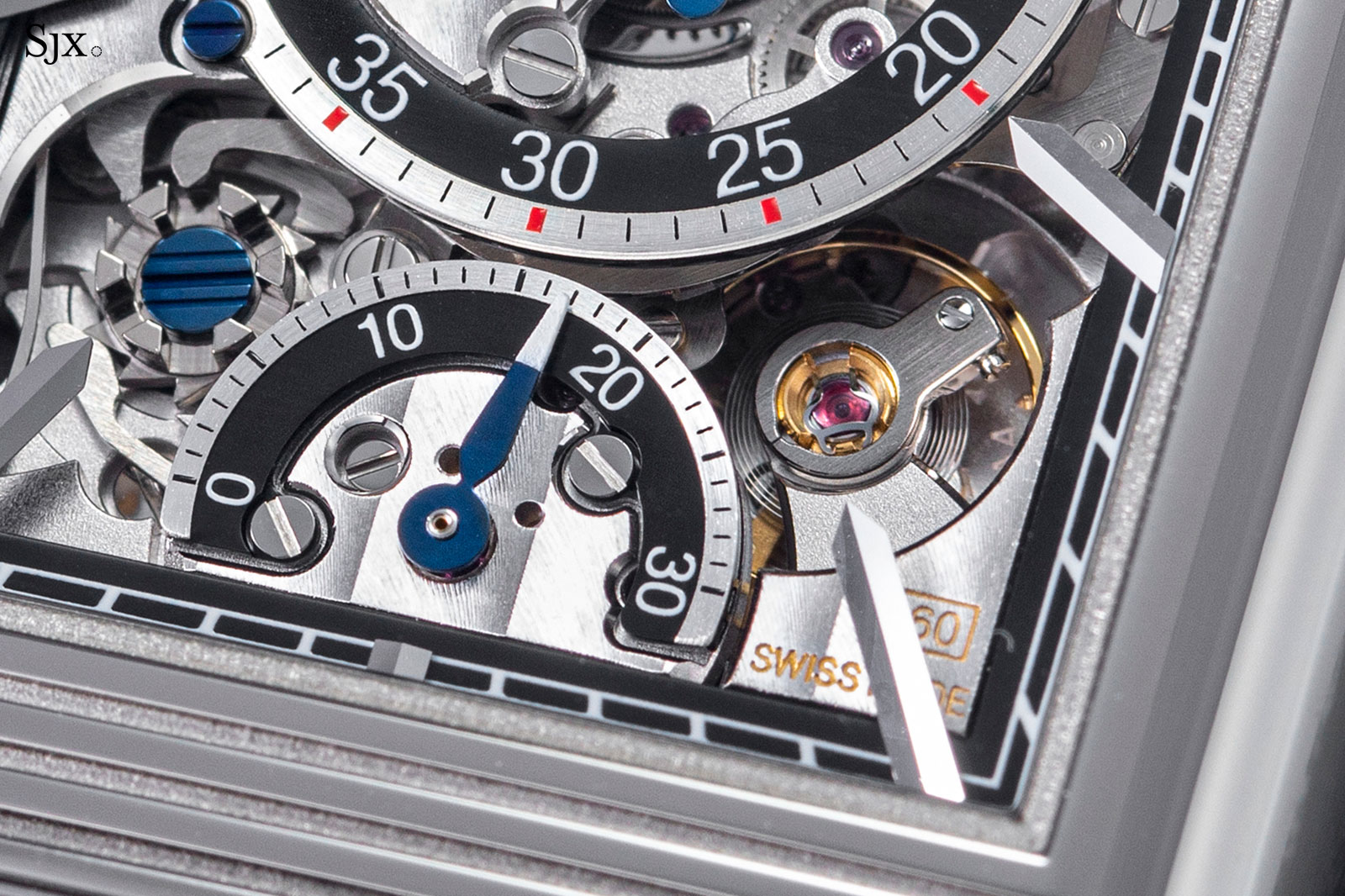
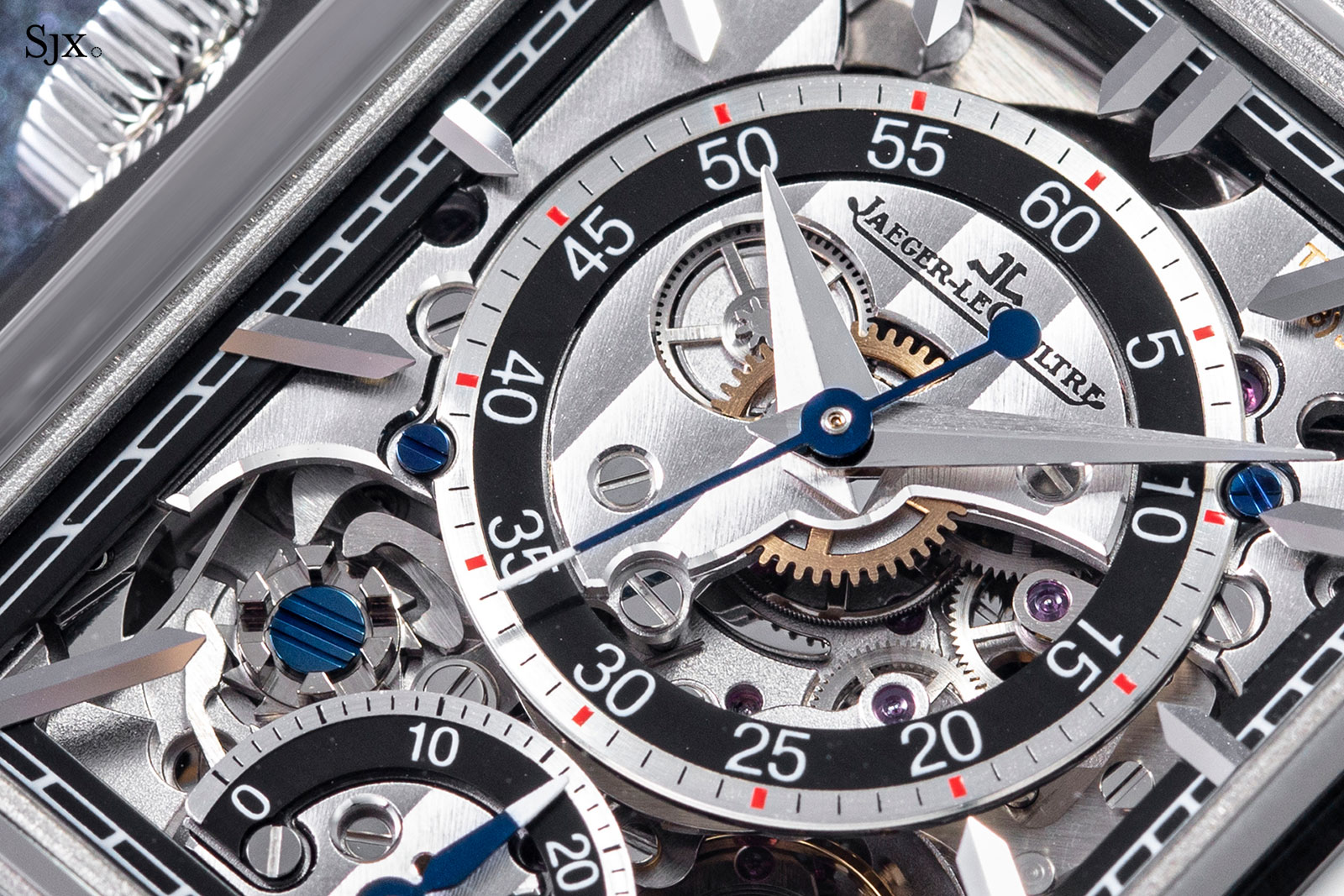
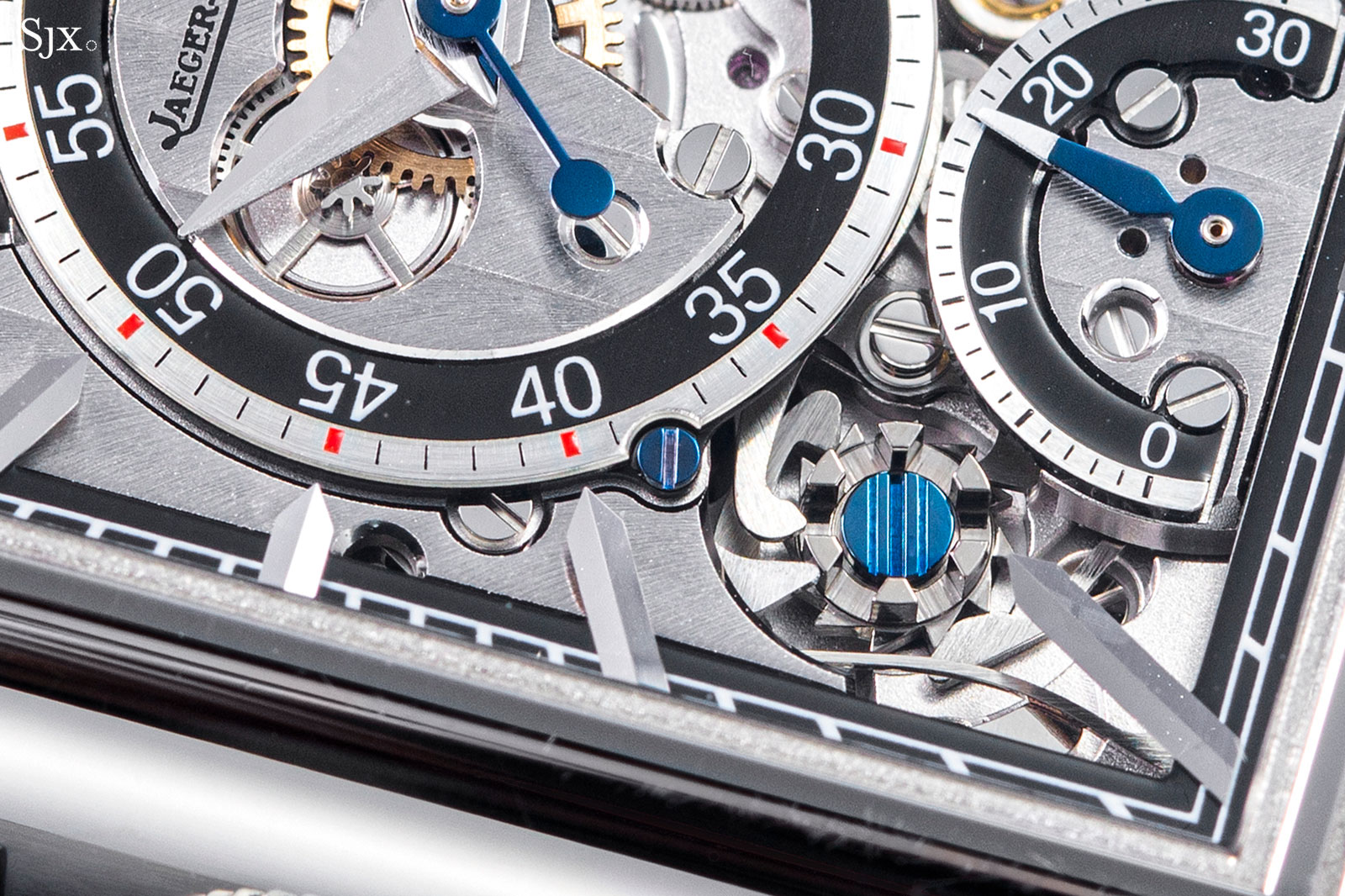
Concluding thoughts
Overall, the Reverso Tribute Chronograph lacks some of the quirky charm of the original, but arguably makes up for it with the enhanced practicality of the additional time display on the chronograph side. Its larger size may dissuade some buyers, but the technical and aesthetic updates enable it to stand on its own merit – this is not just another remake of a vintage watch. It will appeal to both Reverso fans and those who enjoy unusual chronographs.
But high quality and technical interest come at a cost, quite literally. Specifically, the Tribute Chronograph in steel costs more than double the brand’s average retail price according to Morgan Stanley’s 2022 estimates. While it is not the overwhelmingly good buy that JLC once excelled it, many rival brands charge more for less. With orders for the watch exceeding the first year’s production according to insiders, the Tribute Chronograph has already proven to be a hit.
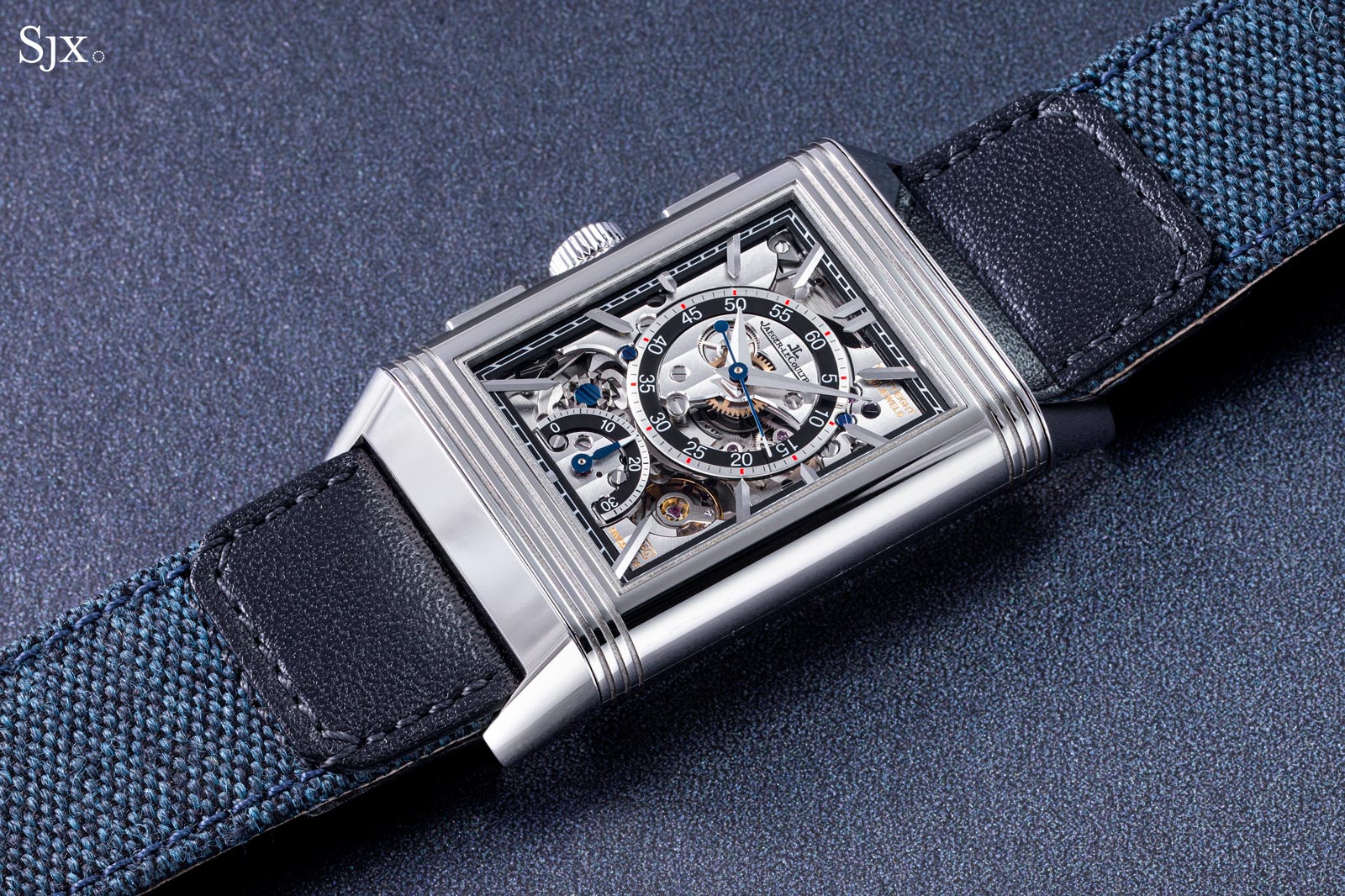
Key Facts and Price
Jaeger-LeCoultre Reverso Tribute Chronograph
Ref. Q389848J (steel)
Ref. Q389257J (18k pink gold)
Diameter: 49.4 mm x 29.9 mm
Height: 11.14 mm
Material: Steel or 18k pink gold
Crystal: Sapphire
Water resistance: 30 m
Movement: Cal. 860
Functions: Hours, minutes, chronograph with retrograde 30-minute counter
Winding: Manual
Frequency: 28,800 beats per hour (4 Hz)
Power reserve: 52 hours
Strap: Casa Fagliano calfskin leather and canvas-and-calfskin straps included
Limited edition: No
Availability: At boutiques only
Price: US$21,400 (steel) and US$37,400 (pink gold) excluding taxes
For more, visit Jaeger-lecoultre.com.
Back to top.

